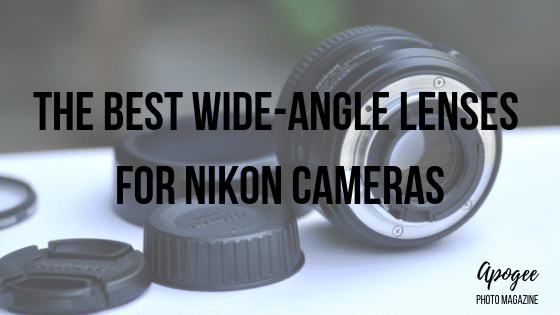 Wide-angle lenses may not be the first thing you grab when building a lens kit. But eventually, you’re going to want to have one or two handy. Wide-angle lenses, as the name suggests, create images with a wider field of view compared to other lenses. Strictly speaking, anything below 35mm on a full-frame body is considered a wide-angle lens. If you shop around for older manual film lenses, you’ll find quite a few in the 20-35mm area.
Wide-angle lenses may not be the first thing you grab when building a lens kit. But eventually, you’re going to want to have one or two handy. Wide-angle lenses, as the name suggests, create images with a wider field of view compared to other lenses. Strictly speaking, anything below 35mm on a full-frame body is considered a wide-angle lens. If you shop around for older manual film lenses, you’ll find quite a few in the 20-35mm area.
But modern lenses are often quite a bit wider. It’s possible to get lenses as low as 10 mm before getting into fisheye territory if you need all that extra field of view. Modern distortion and chromatic aberration corrections combined with the incredible slew of Nikon options (matched only by Canon) mean that you are spoiled for choice.
Typically wide-angle lenses are used for architecture, landscapes, astrophotography, and other subjects where you want to showcase a lot of scenery. But they can even be used in portraiture, sports shoots, and other types of photography you would not expect. They effortlessly create an additional context for your main subject by providing more of the background to tell a story with.
What Should I be Looking for in a Wide-Angle Lens?
Focal Length
Focal length matters quite a bit here because each increment of focal length makes a far larger impact on your field of view compared to a telephoto lens. Comparing a 10mm field of view to a 12mm one will be noticeably different compared to an 85mm and 90mm field of view.
But just how wide of a field of view do we want when shopping for a wide-angle lens? The wider you go, the harder (read: more expensive) it is for the manufacturer to make corrections to avoid barrel distortion. Vignetting at the corners of the frame is also unavoidable when using ultra-wide-angle lenses, especially ones with faster apertures.
While super wide-angles can be fun, remember that even a 15mm or 25mm will give you plenty of space to work with compared to the field of view you may be used to. Even if you don’t shoot many landscapes, having a new focal length forces you think creatively about how to compose an image.
Maximum Aperture
What aperture (or aperture range) you need is also entirely dependent on your needs as a photographer. If your lens has a range showing, such as f/3.5-5.6, the lens stops itself down as it works through the zoom range. In effect, the lens collects less light because the distance light has to collect increases as you zoom and the barrel increases in length.
This is a much cheaper solution compared to constant aperture zoom lenses, which tend to be heavier and use more expensive glass. The autofocusing speed on continuous aperture lenses is usually faster as well.
But whether you actually need a fast or constant aperture or not depends on whether you need low light capacity or a shallow depth of field. Some wide-angle lens owners shoot landscapes or architecture, where you usually want a deeper depth of field to get most or all of the scene in sharp focus. In cases like this, lenses with a maximum aperture of f/3.5 or higher are perfectly fine, even if they stop down further as you zoom.
If you’re looking for astrophotography or want a shallow depth of field, then you’ll want to look at f/2.8 apertures and wider (keep in mind that the smaller the f/number, the wider the aperture and thus collecting more light being). With each stop of aperture gained the shutter speed needed for a long exposure image halves, making the aperture value critical for any low light work.
Brand
As stated earlier, Nikon has one of the most diverse and mature lens selections available on the photography market today. Combined with their third-party selections, there are dozens of wide-angle options to choose from.
Nikon lenses themselves range from extremely inexpensive to high priced. Their DX (APS-C crop-sensor) and FX (full-frame sensor) line also are cross-compatible with one another. Do keep in mind that if you place a DX lens on an FX body, the camera will auto-crop the sensor to compensate at the cost of image resolution.
Tamron and Sigma are two of the leading third-party manufacturers for Nikon (as well as Canon). The lenses are well made and 100% compatible with Nikon systems, including autofocus and image stabilization. They tend to be priced a bit lower compared to the Nikon versions as well but may use more plastic which may give a less “premium” feel to your glass. But Tamron also offers premium lenses in the form of “SP” models just as Sigma has its “Art” line.
If manual focusing doesn’t scare you then several somewhat obscure manufacturers offer ultra-wide options as well. Rokinon (aka. Samyang) is a Korean manufacturer that offers prime lenses as wide as 10mm before getting into fisheye territory at very reasonable prices. Laowa is another manufacturer that has some of the best distortion correction on the market; both offer fast apertures as well of f/2.8 to f/2, depending on the lens.
Several budget Chinese manufacturers like Meike and 7Artisans are starting to hit the market as well with fast wide-angle primes. However, these lenses are known for having very poor quality control compared to other companies. Models tend to vary significantly in sharpness and color and are reported to sometimes even fall apart over time. But the vast majority are surprisingly well made for the price and give a great wide-angle experience for very little money.
Prime vs. Zoom
A debate as old as time – but it need not be a debate at all. Prime and zoom lenses both have a role to play in the kit of most photographers.
For those who don’t know, prime lenses have a single focal length, and thus a fixed field of view, while zoom lenses can shift through a specified range to create a variable field of view without moving. Or another way of putting it: you zoom with your feet when shooting with a prime lens.
One of the oldest arguments in favor of prime lenses is “prime lenses offer better image quality compared to zooms.” And the answer is that it depends. That is generally true of older zoom lenses, but modern zooms have come a long way and use extensive corrections, premium glass, and lens elements that render the difference minimal at best.
Cheaper zoom lenses (like kit lenses) do often suffer from chromatic aberrations like color fringing and loss of sharpness throughout the focal length or at certain apertures. On the other hand, prime lenses are easier to create optically sound for a given focal length and are usually faster in aperture (and cheaper) than a zoom that covers that same focal length. But price aside an expensive zoom can generally match a prime covering that same focal length (if not necessarily at the same aperture).
A mark in favor of a wide-angle zoom is that you aren’t switching out lenses constantly compared to using prime lenses. Wide-angle lenses can sometimes be a bit constraining; the 24-70mm lens is a classic for many photographers because it covers both wide-angle and portrait focal lengths. Nowadays even 18-200mm zooms exist to cover nearly any focal length needed.
Best Nikon Wide-Angle lenses of 2019
Best APS-C Wide-Angle Zoom Lenses for Nikon
Sigma 18-35mm f/1.8 DC HSM Art
The Sigma 18-35mm f/1.8 is easily one of the best wide-angle zooms on the market. The focal length and aperture combination is unmatched and have a huge range of creative possibilities. F/1.8 is quite fast and lets you create long exposure astrophotos significantly faster compared to the more standard f/2.8 lenses out there. Portraits are another style of photography that benefits from the shallow depth of field created by f/1.8, but you’ll want to stay away from the 18mm end to avoid unflattering distortion in close-up subjects. Center sharpness at f/1.8 is excellent, but it quickly falls off at the corners until stopped down to around f/4.
The focal length is a bit odd; the 35mm end translates to 52.5mm equivalent on a crop sensor, not very wide-angle at all. And 18mm becomes 27mm; perhaps not the landscape photographer’s lens of choice but still gives some excellent wide-angle possibilities.
Barrel distortion is occasionally noticeable but very well controlled. Another benefit is the native 0.23x macro magnification; while not a true macro lens the Sigma 18-35mm f/1.8 would pair nicely with an extension tube. Keep in mind that the lack of weather sealing on all of Sigma’s Art series makes them a bit risky compared to other lenses for outdoor photographers.
- Designed specifically for APS-C sized sensors
- Internal focusing and zooming allows for more usability and functionality
- The 18-35mm is ideal for landscapes, portraits, still life, snap shots, casual, and close-ups
- Angle of view (SD1):76.5º-44.2º
Sigma 10-20mm f/3.5 EX DC HSM & Nikon 10-24mm f/3.5-4.5 (tie)
These are two of the best ultra-wide options for the Nikon system. Both lenses come at a very reasonable price point and create a 15mm equivalent field of view for the APS-C cropped sensor.
The Sigma 10-24mm f/3.5 has a constant f/3.5 aperture that’s too slow for most astrophotography but still usable for long exposure low light photography such as city lights at night or landscapes. While it’s not as long on the far end of the focal range as the Nikon 10-24mm f/3.5-4.5, there’s also potentially less overlap if you have a second lens to cover the mid-range zoom slot.
Sigma’s older 10-24mm f/4-5.6 remains a competitive choice if you can do without the constant aperture and want to save money. Be aware that vignetting is not nearly as well controlled in the older model, however. With the newer f/3.5 you’re looking at approximately 2/3 EV of darkening at the corners at 10mm.
Nikon’s 10-24mm f/3.5-4.5 variable aperture lens does stop down as you head towards 24mm, but as long as you’re not looking for low light capacity it’s a great choice for landscapes, architecture, and event photography. The two extra mm of focal length gives it a bit more versatility.
Barrel distortion is not very well controlled, however, making it a poor choice for professional architecture photography. The Sigma version does a much better job at keeping barrel distortion to a minimum across the focal range.
- Ultra wide-angle of view with large maximum aperture of F3.5
- Sharp images with high contrast and superior peripheral brightness
- Super multi-layer lens coating reduces flare and ghosting
- Hyper Sonic Motor (HSM) ensuring silent, high-speed AF. Nikon mount built in motor lens: compatible with D40, D40x, D60, D3000, D5000
- Aspherical lenses perfectly correct coma aberration.Corresponding Mounts:Nikon HSM,EX,DC
- Ideal for landscapes, cityscapes, interiors, architecture and more.
- Focal Length : 10- 24 mm, Close focusing to 0.8 feet
- Renders a picture angle of 109 degrees through 61 degrees, equivalent to focal lengths of 15-36mm.
- SWM enables fast, accurate and quiet autofocus operation., For superior sharpness and color correction by effectively minimizing chromatic aberration.
- Aspherical lens elements virtually eliminate coma and other types of lens aberration, even when used at the widest aperture.Accepts Filter Type:Screw-on
Runner Up: Tokina 11-16mm f/2.8 Pro DX II
The Tokina 11-16mm f/2.8 is a sharp, fast aperture ultra-wide-angle that’s an absolute bargain choice for the crop sensor photographer. Barrel distortion is noticeable at 11mm but well controlled and disappears at 16mm. F/2.8 makes it a great choice for the low light photographer. Vignetting will remain noticeable until stopped down and zoomed out to 16mm.
The savvy shopper should be aware that while there’s a version I of the Pro DX it does not have an internal focusing motor. It’s meant to be used with Nikon DSLRs with focusing motors built in, such as the Nikon DF, D750, and D810.
Lower end models like the D3500 won’t be able to use autofocus with the DX I. The DX II also includes improved glass coatings to reduce flare and chromatic aberrations. Anti-flare coatings are especially useful on ultra-wide-angle lenses because of the vast viewing angle they provide.
- USA Version. 3 Year Tokina Warranty included. Intended for sale within the USA.
- Aperture Range: f/2.8 to f/22 Designed for Cameras with APS-C Sensors
- Two Aspheric Lens Elements Two Super-Low Dispersion Lens Elements
- Multi-Layer Coating 77mm Filter Thread
Best Full-frame Wide-Angle Zoom for Nikon
Sigma 14-24mm f/2.8 DG HSM Art
When you need the maximum field of view, ultra-wide-angle lenses, such as the Sigma 14-24mm f/2.8, have you covered. f/2.8 is also the widest available aperture for zoom ultra-wide-angle lenses of this focal range; you’ll be looking at a prime lens if you want a wider aperture value.
Slight vignetting (darkening of the borders of the image) is unavoidable in fast ultra-wide lenses but becomes less of an issue once the aperture stops down to around f/5.6 or zoomed past 14mm. Given how mild it manifests compared to some of the APS-C lenses above it’s best embraced as part of the character of the lens. The corners are also noticeably less sharp at f/2.8 as well.
- INCLUDES: Sigma 14-24mm f/2.8 DG HSM Art Lens + Sigma USB Dock + AirBag Packable Bag and Camera Insert + SanDisk 64GB C10 Ultra UHS-I SDXC Memory Card + Altura Photo Mini Tripod with Pistol Grip + Altura Photo Rapid Fire Wrist Strap + Altura Photo Hard-Shell Case + Altura Photo Cleaning Kit + 3 Sizes MagicFiber Microfiber Lens Pouch
- HIGH PRECISION LENS: The Sigma 14-24mm f/2.8 DG HSM Art lens is an outstanding option for architectural and landscape shooters. A part of the esteemed Art-series of lenses, a sophisticated optical design is used that incorporates three FLD, three SLD, and three aspherical elements to help reduce chromatic aberrations and keep distortion under control.
- COMPATIBLE with all Nikon DSLR Cameras, including D500, D3100, D3200, D3300, D3400, D3500, D5100, D5200, D5300, D5500, D5600, D7100, D7200, D7500 APS-C Cameras, and D5, DF, D600, D610, D700, D750, D800, D810, D850 Full Frame DSLR Cameras.
- SIGMA accessories included: Sigma Lens Cap + Sigma Rear Cap LCR II + Lens Case
- SIGMA AUTHORIZED DEALER. Includes Sigma USA 4-Year Warranty.
Nikon 16-35mm f/4G ED VR II AF-S Nikkor
Nikon’s 14-24mm f/2.8 is a competitive choice in terms of image quality to Sigma’s version but not in terms of pricing. If a fast aperture isn’t required, then the Nikon Nikon 16-35mm f/4G is well worth looking at.
Losing 2mm of focal length at the wider end does make a significant difference in the field of view but gaining reach out to 35mm gives it more flexibility as a walk-around wide-angle zoom. This makes it a particularly good lens for event photographers who want to showcase their subjects with a bit more context from the surroundings.
The slower aperture also helps bring the price down to a more affordable level compared to the f/2.8 ultra-wide-angle model. Distortion is poorly controlled at 16mm, but sharpness remains good even at the edges of the frame at most focal lengths. With .25x macro magnification and a minimum focusing distance of 27cm the 16-35mm is a surprisingly good choice for close-up macro photography.
VR (Vibration Reduction) helps to stabilize the lens when shooting handheld to prevent motion blur from impacting images. Nikon’s in-lens VR provides around four stops of stabilization in most shooting situations. If you usually need 1/1000th of a second to prevent motion blur from affecting an image with a VR lens, you could shoot as slow as 1/60th of a second and have the same chance of motion blur.
- Ideal for wide-angle and "normal" shots
- Maximum aperture: f/4 ; Offers two focus modes, M/A (autofocus with manual override) and M (manual)
- Lens construction: 17 elements in 12 groups
- Image stabilization, vibration reduction (VR II) up to 4 stops
- Nikon F mount for FX and DX DSLRs
Best Wide-Angle Prime Lenses for Nikon
Sigma 24mm f/1.4 DG HSM Art
Sigma offers a variety of Art lenses covering a variety of focal lengths. The Sigma 24mm f/1.4 uses a focal length that will appeal to most photographers and an extremely fast f/1.4 aperture for narrow depth of field and excellent exposure in low light situations.
The Sigma 24mm is an extremely sharp lens, and sharp lenses are all the rage nowadays. It stays so across the entire frame, including at f/1.4; some photographers may prefer lenses with a bit more character (see below), but the Sigma offers impressive overall image quality. While both it and the Nikon it’s meant to compete with are chunky lenses the Sigma is slightly bulkier (1.36 lbs/620 g compared to 1.46 lbs/665 g).
f/1.4 is an aperture well suited to astrophotographers as well. Though as a portrait lens you’ll need to position yourself in such a way that the subject distortion is minimized or embrace it and go for a more creative take. Sigma’s 20mm f/1.4 DG HSM Art is another excellent choice if you find you need a bit more focal width.
- As part of the art Line within Sigma's Global vision series, this Lens' is designed to achieve truly notable optical performance and is ideally suited for creative and artistic applications.
- The prime 24mm focal length offers a versatile wide-angle perspective when Used on full-frame sensors,
- Fast f/1.4 maximum aperture is well-suited for working in Low-light conditions and Also provides greater control over the focus position when using shallow Depth of field techniques.
Runner up: Nikon AF-S Nikkor 24mm f/1.4G ED
While optically very similar, the name brand Nikon 24mm f/1.4G costs more than double the price of the Sigma without delivering twice the image quality. The images created by the two lenses are not only identical to a casual viewer, but the DXOMark charts show that the Sigma actually outperforms the Nikon in some respects.
But image sharpness isn’t all – some photographers will prefer the softer corners of the Nikon 24mm over the clinical sharpness of the Sigma version. Whether it’s worth paying twice the price of the Sigma, however, is debatable.
- Compelling wide-angle perspective combined with an ultra-fast f/1.4 aperture serves the needs of demanding professionals in exacting conditions
- Offers superior sharpness and color correction by effectively minimizing chromatic aberration, even at the widest aperture settings
- Aspherical lens elements virtually eliminate coma and other types of aberration, even when shooting at the widest available aperture
- A Nano Crystal Coat further reduces ghosting and internal flare across a wide range of wavelengths for even greater image clarity. Picture angle with 35mm (135) format-84°
- Rear Focus (RF) provides smooth and fast auto-focus while eliminating front barrel rotation and lens length changes
Sigma 14mm f/1.8 DG HSM Art
The Sigma 14mm f/1.8 is a somewhat specialized choice for most photographers. The super wide-angle field of coverage and fast aperture make it ideal for astrophotography as it gathers over twice as much light as f/2.8, the usual benchmark. Nikon’s 14mm FX ED maxes out at f/2.8, costs more, and offers no weather sealing.
It’s also immense by any standard, weighing in at 2.5 lbs (1170 g). As an astrophotography lens, comatic aberrations are extremely well controlled. A coma is a form of distortion in off-center point sources; stars in the corner of an image will look distorted to varying degrees.
The 14mm is also one of the few Art lenses that is splash and dust protected with rubber seals and a durable metal-plastic construction, making it a great choice for photographers looking to shoot in all weather conditions. But given the odd focal length/aperture combination and high price bracket, it’s definitely a niche option.
- Large diameter delivering f/1.8 brightness
- Beautiful bokeh effect, and outstanding control of light streaking
- Ultra-wide angle of view
- Super multi-layer coating helps reduce flare and ghosting
- Large HSM (Hyper-Sonic Motor) delivers ample torque to the focusing group for outstanding speed, ensuring exceptionally stable performance even at lower speeds
Nikon AF FX NIKKOR 24mm f/1.8G
Nikon has three 24mm lenses at f/1.4, 1.8, and 2.8. While each one has its charm, the Nikon 24mm f/1.8G has the best balance between price and image quality.
Thanks to its plastic and glass construction it weighs in at 355 g/0.78 lbs, about half the weight of the slightly faster but chunky Sigma f/1.4 (665 g./1.47 lbs) and Nikon f/1.4 (645 g/1.42 lbs). Barrel distortion is evident but correctable. The 24mm focal length on FX cameras is very versatile and well suited to walk around photography; it becomes 36mm on a crop sensor, making it a normal field of view rather than a wide-angle lens.
The Nikon 24mm f/2.8D is also a great choice as it’s bargain-priced compared to both the f/1.8D and f/1.4 models. It’s also as sharp as the others at f2.8; if you can do without the shallower depth of field and extra light exposure, it may be your best Nikon 24mm prime lens.
- Fast f/1.8 aperture for beautifully blurred backgrounds and great low-light performance
- Draws peak performance from high-resolution DSLRs
- Great for landscapes, skyscrapers, environmental portraits, food, action, hobbies and much more
- Part of Nikon's exceptional system of full-frame f/1.8 prime lenses
- Versatile wide-angle prime lens will widen your creativity. Minimum aperture - f/16
Conclusion
Nikon’s lens selection is huge. There are several lenses that may suit your budget or photography needs even better, including their many 28mm FX options and zoom lenses. And that’s before throwing in the Sigma, Tamron, and Tokina options. It’s not possible to choose “the best lens” from this list because it does depend on what you want to shoot as well as your gear.
Wide-angle lenses occupy an important place in the photographer’s arsenal by opening up a scene to your creative eye. Additional context is created for the viewer of a given subject, or the background can become the main subject itself. Wide-angle lenses do have some creative challenges; flare from bright light sources is a common issue, as is barrel distortion of straight lines and distortion of close subjects.
FX photographers doing landscapes will have different needs from DX photographers shooting landscapes. If you want a bit of street or event flexibility, then you’ll need a different lens from someone who wants to do astrophotography. Wide-angle lenses offer all of these options to you.
Vignetting of the corners is unavoidable when wide open or at minimum focal length, but both are easily fixed in post-processing or appreciated merely for what they are. Wide-angle lenses are also notorious for going soft in the corners – something else that some photographers don’t mind. Clinical sharpness is all the rage today but doesn’t have to be for you.














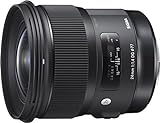






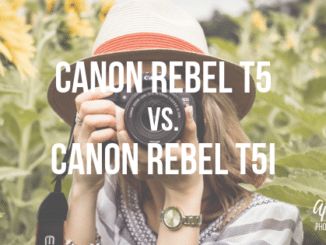
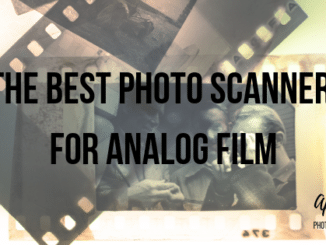
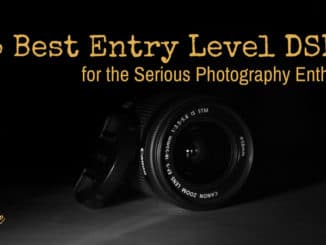
Leave a Reply